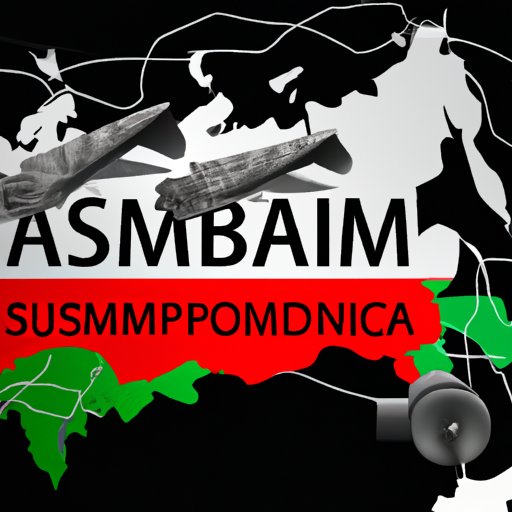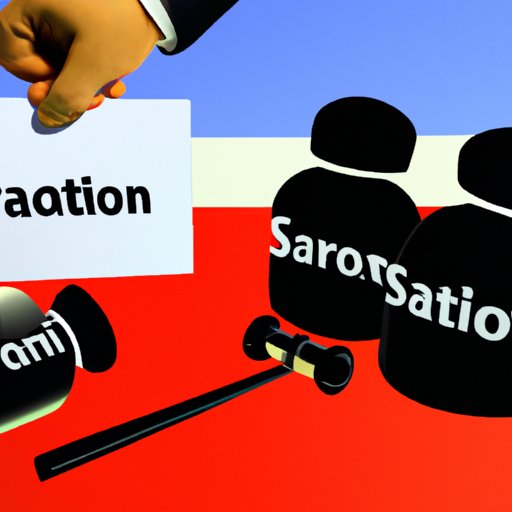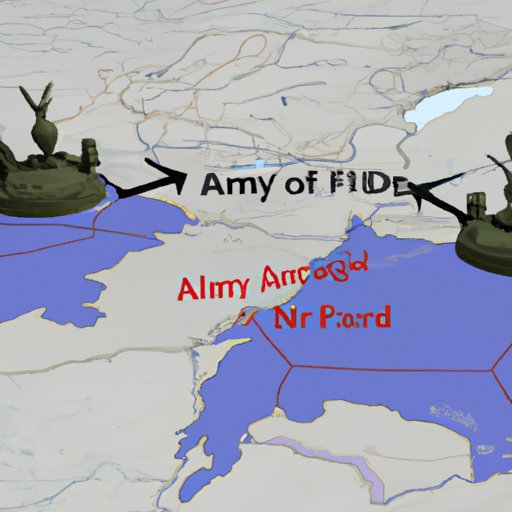Happy Sharer
Introduction

There are many reasons why people may want to start a war. It could be to gain control of resources, to protect their interests, to spread ideology, or even just to satisfy their own ambitions. Whatever the reason, starting a war requires careful planning and preparation, as well as a willingness to accept the consequences of conflict.
Increase Military Presence in a Region of Conflict
One of the first steps in starting a war is to increase the military presence in a region of conflict. This is often done to demonstrate strength and resolve, as well as to put pressure on the other side. To do this, a nation can strengthen its existing military forces by deploying additional personnel and equipment, or by establishing a presence in disputed areas.
Strengthening existing forces involves deploying additional troops and equipment to the region. This can include tanks, aircraft, ships, and artillery, as well as supplies and personnel. This can help to demonstrate a nation’s commitment to the region, and puts pressure on the other side to respond.
Establishing a presence in disputed areas can also be effective. This involves sending in troops to occupy or patrol certain areas, or even setting up bases. This can provide a visible reminder of a nation’s presence and power, and can be used as a bargaining chip in negotiations.

Establish Economic Sanctions Against a Potential Enemy
Another way to start a war is to establish economic sanctions against a potential enemy. This involves cutting off trade and investment, restricting access to financial markets, and implementing tariffs and other punitive measures. Such measures can be used to weaken an economy or to pressure a nation into making concessions.
Cutting off trade and investment is one of the most effective ways to put economic pressure on a potential enemy. This involves imposing restrictions on imports and exports, as well as blocking investments from foreign companies. These measures can cause significant damage to an economy, and can lead to further economic hardship.
Restricting access to financial markets is another way to put economic pressure on a potential enemy. This involves preventing banks and other financial institutions from providing services to the target country, which can make it difficult for them to raise money or acquire goods and services.
Finally, tariffs and other punitive measures can be used to further weaken an economy. This involves imposing taxes on imports from the target country, as well as other measures such as freezing assets or seizing property.

Fund and Arm Proxy Forces in Disputed Areas
Funding and arming proxy forces in disputed areas is another way to start a war. This involves identifying local allies, providing them with arms and training, and supporting them financially. Such forces can be used to launch attacks on the enemy, or to create instability in a region.
Identifying local allies is the first step in this process. This involves finding groups or individuals who share similar goals and objectives, and who are willing to fight for them. Once identified, these groups can then be provided with arms and training to enable them to carry out operations in the target country.
Supporting these forces financially is also important. This can involve providing funds for weapons and equipment, or even paying salaries to fighters. Such support can be crucial in enabling proxy forces to carry out their missions.

Cut Off Diplomatic Ties with the Other Country
Cutting off diplomatic ties is another way to start a war. This involves suspending diplomatic relations, removing ambassadors and diplomats, and terminating foreign aid. These measures can significantly reduce communication between two countries, making it more difficult to reach a peaceful resolution.
Suspending diplomatic relations is the first step in this process. This involves withdrawing ambassadors and diplomats from the other country, as well as halting any diplomatic exchanges. This makes it much more difficult for the two sides to communicate and come to an agreement.
Removing ambassadors and diplomats is the next step. This involves withdrawing all representatives of the target country from the nation initiating the war. This can further reduce communication between the two nations, making it harder to resolve differences peacefully.
Finally, terminating foreign aid is another way to cut off diplomatic ties. This involves stopping all aid programs and assistance to the target country, which can have a devastating impact on its economy and citizens.
Conduct Cyber and Psychological Warfare
Conducting cyber and psychological warfare is another way to start a war. This involves using hacking and other cyber-attacks, utilizing propaganda and disinformation, and manipulating public opinion through media. Such tactics can be used to weaken an enemy’s defenses, discredit its leaders, or even provoke a response.
Using hacking and other cyber-attacks is one way to conduct cyber warfare. This involves targeting computer networks with malicious software or other tools to disrupt operations or steal data. Such attacks can be used to weaken an enemy’s defenses, or to gain access to sensitive information.
Utilizing propaganda and disinformation is another way to conduct psychological warfare. This involves spreading false or misleading information to discredit an enemy’s leaders or policies. Such tactics can be used to manipulate public opinion and sow discord within a population.
Manipulating public opinion through media is another way to conduct psychological warfare. This involves using television, radio, newspapers, and other forms of media to shape public opinion. Such tactics can be used to influence people’s views and provoke a reaction from the target country.
Launch a False-Flag Operation
Launching a false-flag operation is another way to start a war. This involves creating a false narrative, blaming another country for an attack, and using the incident as a pretext for war. Such tactics can be used to justify a military action and rally public support.
Creating a false narrative is the first step in this process. This involves fabricating a story or event that can be used to blame another country for an attack. Such stories can be used to stir up emotions and create a sense of outrage among the public.
Blaming another country for an attack is the next step. This involves accusing the other country of carrying out the attack, regardless of whether or not it is true. Such accusations can be used to justify a military action, and to rally public support for the war effort.
Finally, using the incident as a pretext for war is another way to start a conflict. This involves using the fabricated story or event as an excuse to launch a military campaign against the other country. Such tactics can be used to initiate a conflict without having to declare war officially.
Conclusion
In conclusion, starting a war requires careful planning and preparation. It involves increasing military presence in a region of conflict, establishing economic sanctions against a potential enemy, funding and arming proxy forces, cutting off diplomatic ties, conducting cyber and psychological warfare, and launching a false-flag operation. These tactics can be used to gain an advantage over an enemy, but they also come with a great risk of unintended consequences.
The consequences of war can be devastating, both for those directly involved and for those caught in the crossfire. It is therefore important to remember that war should always be a last resort, and that peaceful solutions should be sought whenever possible.
No comments:
Post a Comment